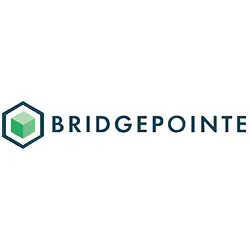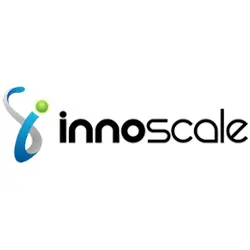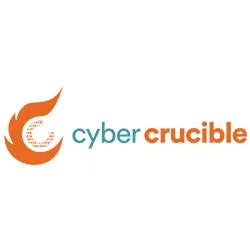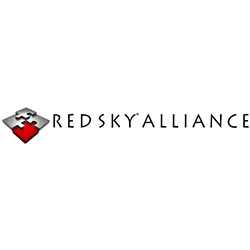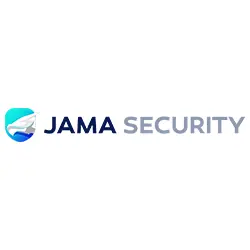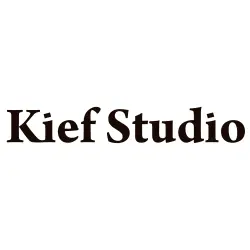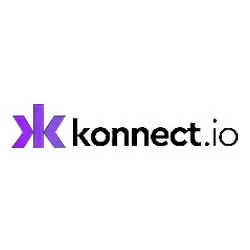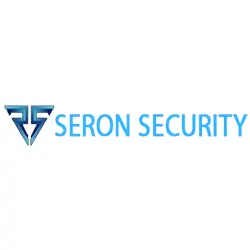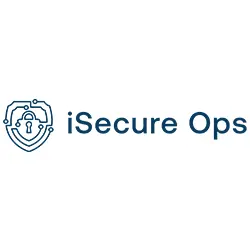In the thrilling, high-stakes world of New York City's digital domain, businesses are apparently under a relentless barrage of cyber threats. Who knew? From those ever-so-clever phishing campaigns designed to separate financial institutions from their money to the oh-so-charming ransomware attacks crippling healthcare providers, the stakes are supposedly higher than ever.
And, wouldn't you know it, those quaint "traditional" security measures just aren't cutting it, leaving all sorts of delightful vulnerabilities exposed on the external attack surface. But fear not, for External Attack Surface Management (EASM) has gallantly emerged as a "game-changer," offering NYC companies a simply revolutionary proactive approach to identify, assess, and, fingers crossed, mitigate these terrifying risks.

This article promises to explore three utterly fascinating ways New York City companies are "leveraging" EASM to bolster their cybersecurity posture. We'll bravely delve into "practical strategies" for discovering those elusive shadow IT assets, heroically prioritizing vulnerability remediation, and, of course, continuously monitoring for "emerging threats."
Prepare to be amazed as you learn how EASM somehow empowers CISOs, SOC teams, ethical hackers, and MSSPs to stay "one step ahead" in the ever-evolving threat landscape, thus ensuring the security and resilience of their organizations right here in the very heart of NYC.
1. Uncovering Shadow IT and Rogue Assets with External Attack Surface Management for New York City Companies
Ah, Shadow IT – those sneaky applications, devices, and services deployed without dear old IT department approval – apparently pose a "significant security risk" for New York City companies. In this terribly fast-paced environment where employees are just dying to find quick solutions, these unmanaged assets can, you guessed it, easily "slip through the cracks," creating those pesky blind spots in the security perimeter. And because life loves a good irony, these assets often conveniently lack proper security configurations, making them irresistible targets for cybercriminals.
The Challenge: Traditional security tools, bless their limited scope, are often designed to monitor internal networks, leaving external-facing assets tragically undiscovered. This is particularly problematic for organizations with a large online presence, multiple subsidiaries, or a distributed workforce – characteristics, we're told, common to "many" NYC businesses. How utterly inconvenient.
EASM Solution: An EASM tool like TRaViS (because every hero needs a cool name) continuously scans the entire internet to discover all assets associated with an organization, including those not officially sanctioned by IT. This includes websites, cloud services, IoT devices, and even those highly sensitive social media accounts. By identifying these "rogue assets," security teams can finally gain a "complete picture" of their external attack surface and can then, perhaps, take steps to secure them. What a concept!
Example: Imagine, if you will, a financial firm in downtown Manhattan that gasp discovered several unauthorized cloud storage accounts being used by employees to share "sensitive client data." These accounts, naturally, were hosted on personal email addresses and lacked proper encryption, posing a "significant risk of data leakage." But thanks to TRaViS, the firm was able to "identify these accounts, educate employees about secure data sharing practices, and implement stricter cloud access controls." And everyone lived happily ever after, or at least until the next shadow IT discovery.
TRaViS Advantage: TRaViS, in its infinite wisdom, uses "AI-powered discovery techniques" to identify even the most "obscure assets," providing "unparalleled visibility" into the external attack surface. Its "continuous monitoring capabilities" ensure that new shadow IT assets are "quickly identified and addressed," thus "minimizing the window of opportunity for attackers." Because who needs attackers having any fun?
Actionable Insight: So, here's a thought: Conduct a regular shadow IT discovery exercise using an EASM tool. Then, prioritize securing or decommissioning any unauthorized assets that handle sensitive data or have known vulnerabilities. And, for good measure, educate employees about the "risks" of shadow IT and promote the use of "approved" IT resources. Revolutionary!
2. Prioritizing Vulnerability Remediation Based on Real-World Exploitability
New York City companies are, apparently, under constant bombardment from vulnerability alerts. Sifting through this glorious noise to identify the "most critical" vulnerabilities that pose the "greatest risk" is, we are informed, a "daunting task." And relying solely on CVSS scores? Oh, darling, that can be "misleading," as they don't always reflect the real-world exploitability of a vulnerability. The horror!
The Challenge: Security teams, those poor souls, often lack the resources and expertise to manually assess the exploitability of every single vulnerability. This leads to the delightful outcome of "wasted time and effort" patching low-risk vulnerabilities while those truly critical ones just sit there, unaddressed. And the pressure to remediate every vulnerability quickly? Well, that can apparently "overwhelm security teams," leading to burnout and, heaven forbid, mistakes.
EASM Solution: EASM platforms, like our trusty TRaViS, bravely go "beyond traditional vulnerability scanning" by incorporating "real-world threat intelligence." They analyze vulnerabilities in the context of the organization's specific attack surface and the current threat landscape. This allows security teams to finally prioritize remediation efforts based on the "likelihood of exploitation" and the "potential impact on the business." Because who has time for vulnerabilities that aren't actually going to ruin everything?
Example: Imagine a healthcare provider in Queens, just minding its own business, suddenly alerted to a "critical vulnerability" in a widely used web application. While the CVSS score was "high" (gasp!), the vulnerability wasn't "actively being exploited in the wild," and the provider, shockingly, had "compensating controls in place." Using TRaViS, the provider was able to determine that the vulnerability posed a "relatively low risk" and, with a flourish, deferred patching to a scheduled maintenance window, allowing them to focus on addressing more pressing security concerns. Because why fix what's not actually broken, right now?
TRaViS Advantage: TRaViS, ever the overachiever, integrates with "leading threat intelligence feeds" to provide "real-time insights" into active exploits and emerging threats. Its "risk-based vulnerability prioritization engine" helps security teams focus on the vulnerabilities that "matter most," thus "reducing the risk of a successful attack." And as if that weren't enough, it "integrates seamlessly with existing vulnerability management workflows." Truly a marvel.
Actionable Insight: So, here's a thought: Implement a risk-based vulnerability management program that prioritizes remediation based on exploitability, business impact, and compensating controls. Then, use an EASM tool to gain a "comprehensive view" of your external attack surface and identify the vulnerabilities that pose the "greatest risk." Because who needs all the vulnerabilities when you can just fix the scary ones?
3. Continuous Monitoring for Emerging Threats and Configuration Drift
The cybersecurity landscape, much like New York City itself, is "constantly evolving." New vulnerabilities are discovered daily, and attackers are, apparently, "constantly developing new techniques." New York City companies, therefore, need a "proactive approach to security" that "continuously monitors" their external attack surface for these delightful emerging threats and configuration drift. Because who can rest when there's always something new to worry about?
The Challenge: Traditional security assessments, those charming relics, are often conducted on a periodic basis, leaving "gaps in coverage." Configuration changes, new software deployments, and those ever-evolving threat landscapes can "quickly render these assessments obsolete." This is "especially challenging" for organizations with dynamic IT environments and frequent changes to their external-facing assets. It's almost as if the world doesn't stand still for security audits.
EASM Solution: EASM, in its infinite wisdom, provides "continuous monitoring" of the external attack surface, detecting new vulnerabilities, misconfigurations, and emerging threats in "real-time." This allows security teams to "respond quickly to potential incidents" and, dare we hope, prevent attacks before they occur. EASM tools can also detect "configuration drift," ensuring that security controls remain effective over time. Because who wants their security controls to just wander off and get lost?
Example: An e-commerce company based in Brooklyn, one sunny day, experienced a "sudden spike in traffic" to a previously unknown subdomain. Using TRaViS, the company "discovered that the subdomain was hosting a phishing site designed to steal customer credentials." The company, acting with lightning speed, was able to "quickly shut down the phishing site and alert affected customers," thus "preventing significant financial and reputational damage." Imagine that – preventing damage before it happens!
TRaViS Advantage: TRaViS provides "continuous, automated monitoring" of the external attack surface, "alerting security teams to potential threats and vulnerabilities in real-time." Its "advanced analytics capabilities" can even detect "subtle anomalies that might otherwise go unnoticed." And the TRaViS alerting system? Why, it's "highly customizable," allowing security teams to receive notifications based on their specific needs and priorities. Because who wants irrelevant alerts, right?
Actionable Insight: So, here's a groundbreaking idea: Implement continuous monitoring of your external attack surface using an EASM tool. Then, configure alerts to notify you of new vulnerabilities, misconfigurations, and emerging threats. And, for extra credit, regularly review your security controls to ensure they remain effective in the face of evolving threats. It's almost like security is an ongoing process!
4. EASM and Compliance for NYC Businesses
New York City companies, especially those in finance and healthcare (because they love regulations), face "stringent regulatory requirements" like PCI DSS, HIPAA, and the NYDFS Cybersecurity Regulation. Demonstrating compliance, we're told, requires "comprehensive visibility" into the attack surface and "proactive vulnerability management." As if they didn't have enough to worry about!
The Challenge: Many compliance mandates, those delightful bureaucratic hurdles, require organizations to maintain a "detailed inventory of their assets," conduct "regular vulnerability assessments," and implement "appropriate security controls." Without a "clear understanding" of their external attack surface, NYC companies "struggle to meet these requirements," risking fines, legal action, and, perish the thought, "reputational damage." It's almost like someone wants them to be organized.
EASM Solution: EASM, ever the helpful assistant, helps companies achieve and maintain compliance by providing a "complete inventory" of their external-facing assets, identifying vulnerabilities, and monitoring for security misconfigurations. EASM platforms often generously generate reports that demonstrate compliance with specific regulations, simplifying that ever-so-enjoyable audit process.
Example: A financial institution in Manhattan, clearly a pioneer, used TRaViS to "identify and remediate vulnerabilities" in its public-facing web applications, thus ensuring "compliance with NYDFS Cybersecurity Regulation." The platform's reporting capabilities conveniently allowed the institution to "easily demonstrate its security posture to regulators," avoiding those dreadful potential fines and penalties. Because who doesn't love avoiding fines?
TRaViS Advantage: TRaViS, being truly considerate, provides "pre-built compliance reports" for common regulations like PCI DSS, HIPAA, and SOC 2. Its "continuous monitoring capabilities" ensure that organizations remain compliant over time, even as their IT environments, in their infinite dynamism, evolve. And because it's such a team player, the platform also "integrates with other security tools," streamlining the compliance process.
Actionable Insight: So, here's a radical idea: Map your compliance requirements to your external attack surface. Then, use an EASM tool to identify any gaps in your security controls and prioritize remediation efforts. And, for the grand finale, generate regular compliance reports to demonstrate your security posture to regulators and auditors. Because who doesn't love showing off their compliance?
Conclusion
External Attack Surface Management (EASM) is, apparently, no longer a mere "luxury" but an absolute "necessity" for New York City companies facing an "increasingly complex and sophisticated threat landscape." By heroically uncovering shadow IT assets, diligently prioritizing vulnerability remediation, and continuously monitoring for emerging threats, EASM somehow empowers CISOs, SOC teams, ethical hackers, and MSSPs to "proactively manage their risk exposure." Solutions like TRaViS, we are assured, provide the "visibility, intelligence, and automation" needed to stay "one step ahead of attackers" and protect those oh-so-critical business assets. Embracing EASM is, therefore, a "strategic investment" in the security, resilience, and "long-term success" of your organization in the "dynamic environment of New York City." Because who needs stress when you can have EASM?
Get Started
Ready to gain "complete visibility" into your external attack surface? How utterly thrilling! Schedule a demo of TRaViS today and discover how our "AI-enhanced EASM platform" can help you reduce risk, optimize security budgets, and ensure compliance. Or, you know, just visit our website or contact us to learn more. Because who doesn't love learning more about something so utterly vital?

